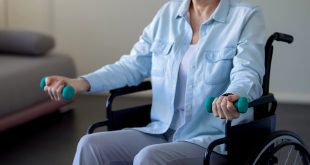Members of the alumni group of the Diabetes, Exercise and Healthy Lifestyle Program were reflecting on their experiences from previous winters and the challenges they faced in managing their diabetes. The topic had been raised in the discussion forum of the diabetes care community. Here are some of their thoughts.
Heated gloves for cold hands
Joan: Five years after having been diagnosed with type 2 diabetes, I began to suffer from numbness and tingling in my feet and later in my hands. The worst was when my two middle fingers in both hands would turn dead white on a really cold day. I had to warm my hands in hot water, then the colour would change to blue and finally red. I was diagnosed with Raynaud’s disease.
I had a number of blood tests but no other cause was found. I was advised to use mittens instead of gloves because the circulation in fingers keeps them warm when they are crowded in the mittens. Unfortunately this was not a good solution for me because I couldn’t walk the dog with mittens on. I had to buy gloves with heated coils in them. This has helped my problem considerably, but not cured it.
Warming hands before monitoring
Mary: My challenge in winter months has been difficulty in getting enough blood from my fingers for monitoring. I had to waste 2 or 3 strips to draw enough blood for the test. The skin on my fingers gets all puckered up. I tried setting the lancet to a deeper setting but then it would hurt. I would even squeeze the finger a few times until I learned from my diabetes educator that too much squeezing can give falsely low readings because the fluid from under the skin has a lower level of sugar.
I have learned now to soak my hands in warm water and really rub my hands together to bring more blood to my fingers before using the lancet. It works.
Indoor exercise has lowered our A1C
Gerry: My wife and I have both suffered from type 2 diabetes for a number of years. We have been in Canada for 20 years but have not really acclimatized to cold weather. My wife found it hard to go for walks in winter as she had fractured her hip from a fall, slipping on a patch of ice. We tended to be less active in winter months and had always found our A1C creeping up by a point over six months. We had a big home and our only son had moved to Houston, Texas. We both decided to sell the house and move into a condo.
We are within walking distance of shops, restaurants, harbour front, Toronto Island, art gallery, museum and many theatres. Our condo has a swimming pool and fitness centre. We are very active and go for long walks using the PATH, Toronto's underground 28- kilometre walkway. It means we don’t have to worry about snow and sleet and the frigid winter temperatures. We use the gym extensively.
Our A1C since we moved into our condo has fallen from 7.5% - 8.2% to 6.5% without any change in medications. Of course, we realize that this is due to the change in our lifestyle. We are enjoying our active retirement. We are involved in many volunteer activities which keep us fully engaged.
Beware of strenuous activity after a meal
Todd: I am 70 years of age and have lived with type 2 diabetes for 15 years, and been able to keep my A1C around 7%, my blood pressure, LDL, HDL and Microalbumin /Creatinine ratio on target, no retinopathy, and I have been a non-smoker all my life. I thought I was doing quite well. But last winter I got a rude awakening.
Three inches of snow had fallen by afternoon, more was expected overnight and I didn’t want to face all that snow to be shovelled in the morning. After supper I went out to clear the driveway. Within 10 minutes I experienced pain in my left shoulder which I thought was the strain of my shovelling. I had a bit of heartburn which I related to having had a couple of glasses of wine with our meal. But then I felt really sweaty and nauseated. Fortunately my wife, a retired nurse, took one look at me and called 911. Within three minutes the ambulance personnel told me I was having a heart attack.
I was in the heart catheterization laboratory within two hours and a stent was put in “my widow-maker artery” which was 90% blocked. My cardiologist told me that the worst time to shovel snow is after a meal, when more blood has gone to the stomach and less blood is available in heart arteries. But then I also learned that this was a blessing in disguise because it happened when help was available immediately.
Be very careful out there in winter!
 Diabetes Care Community Learn, connect and care
Diabetes Care Community Learn, connect and care




